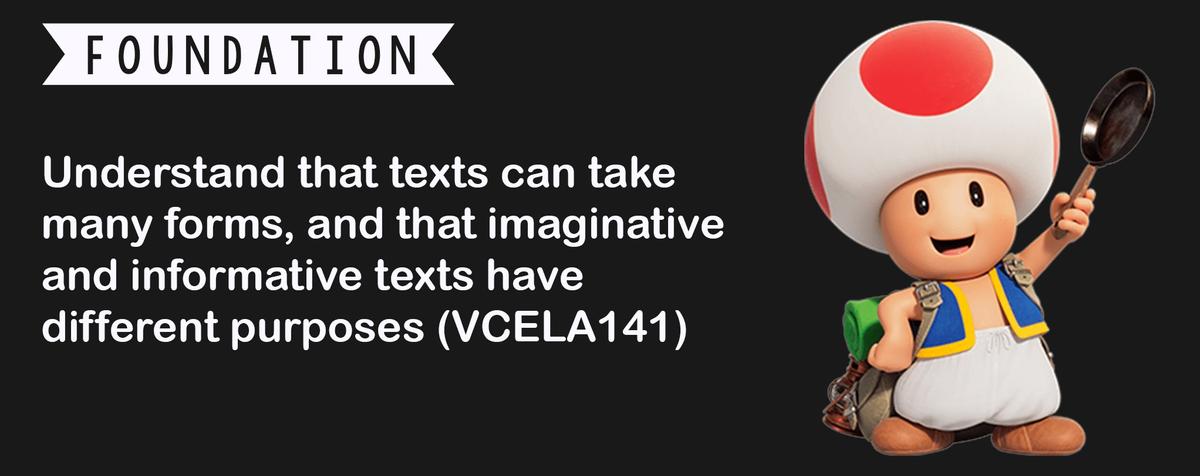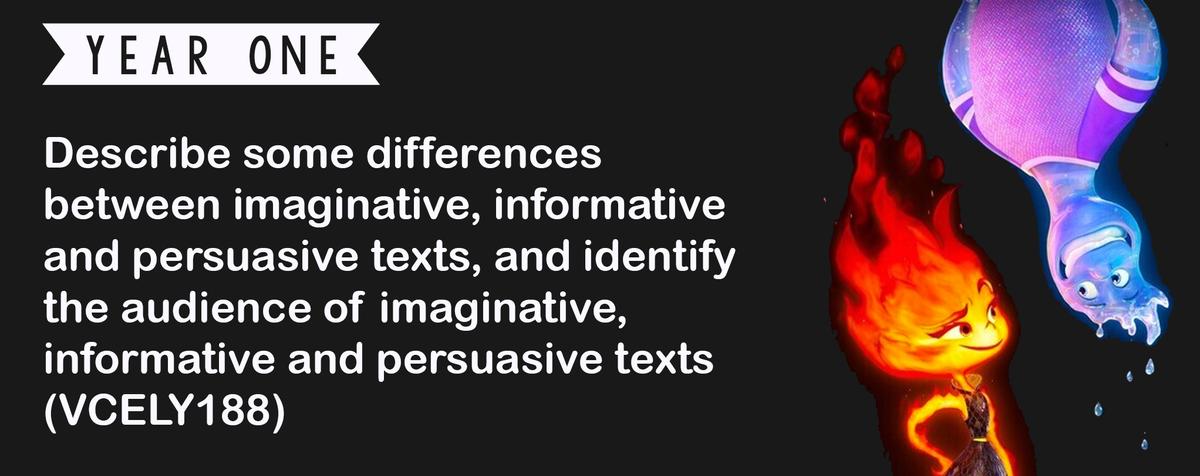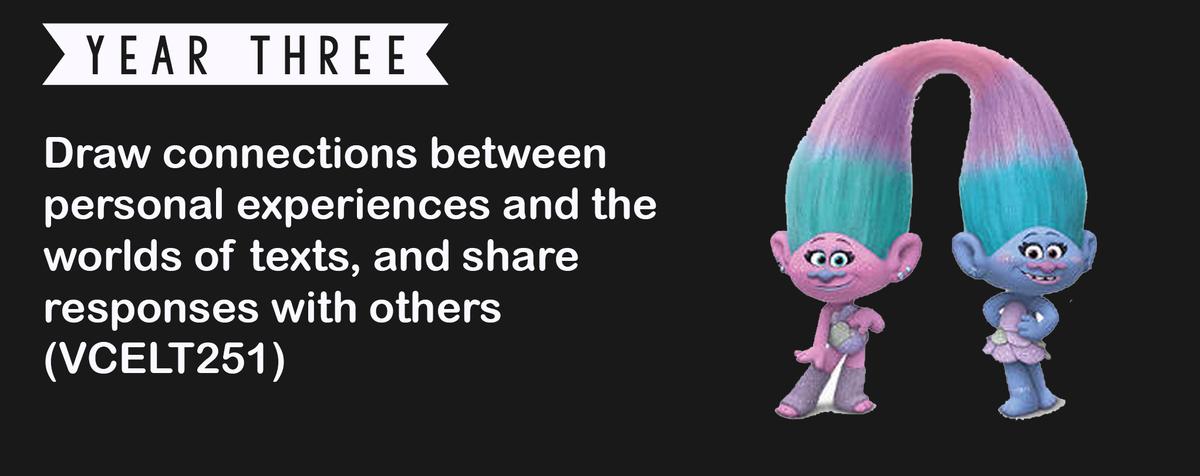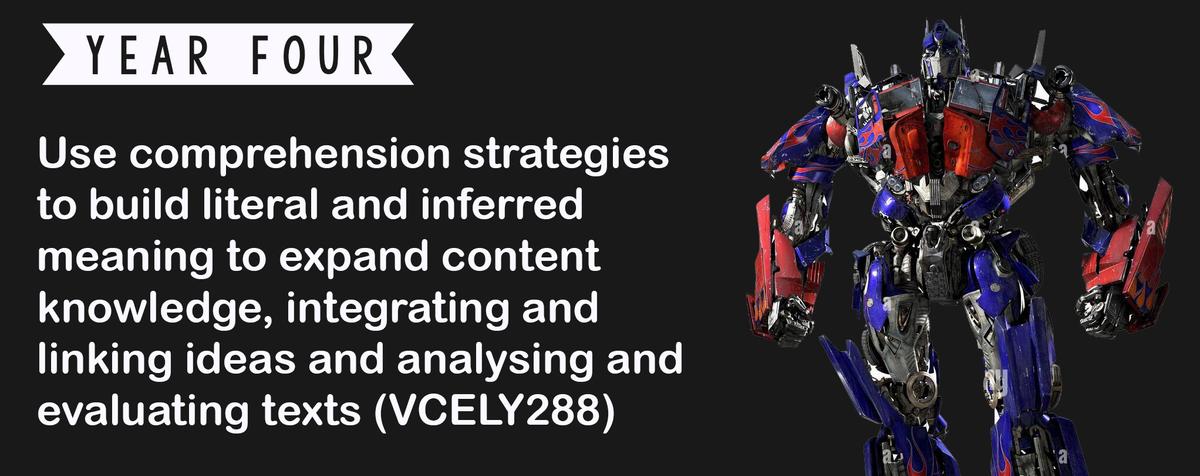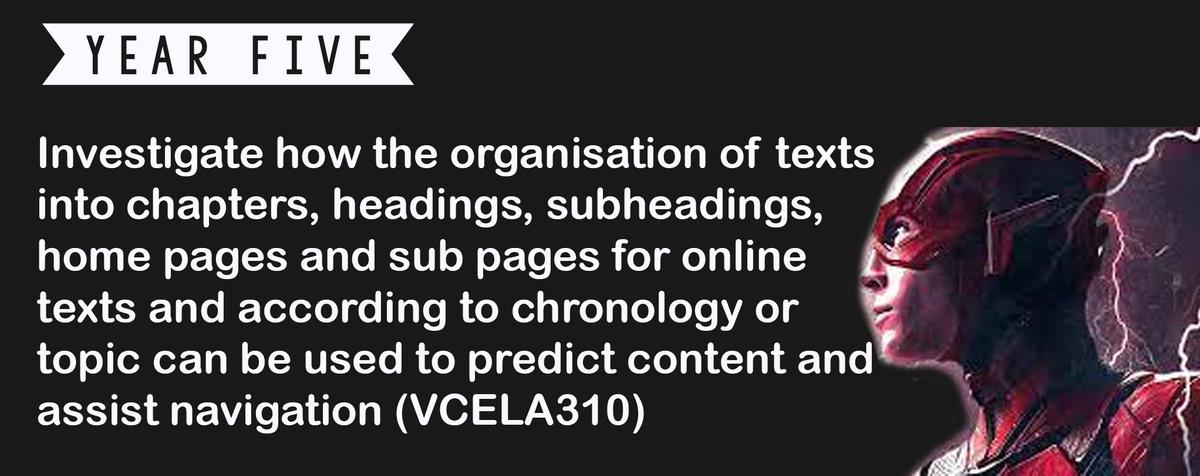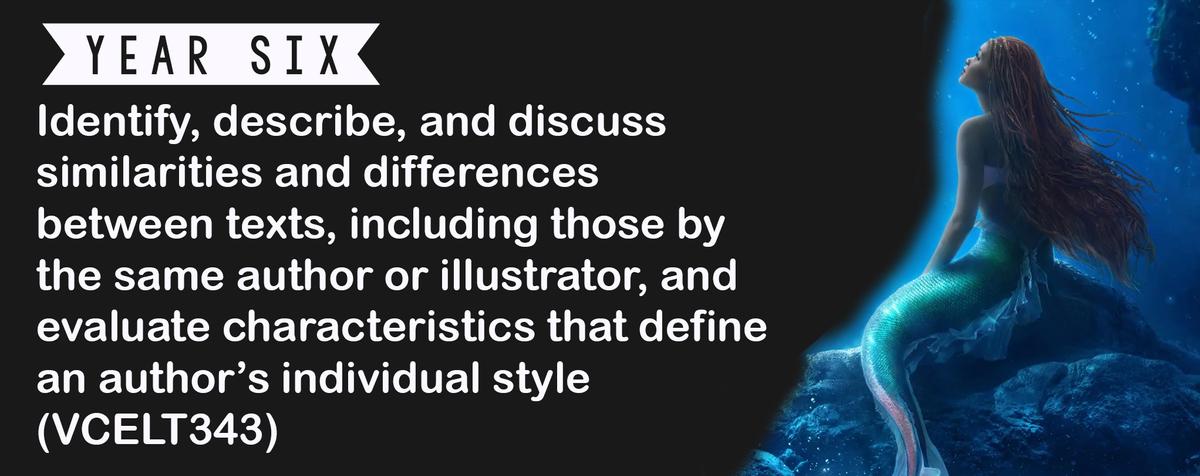English

One of the best activities that takes place on school holidays is a movie day! Whether this means a trip to the cinema or some Netflix on the couch, this is especially inviting considering how cold and wet our weather is at the moment!
I have mentioned before that the Victorian Curriculum often refers to texts when referring to English skills.
Immediately this can make us think of books, but the definition from the Curriculum is actually a lot more broad:
"Texts are the basis for study across the three modes of Reading and Viewing, Writing and Speaking and Listening. Texts can be written, spoken or multimodal, and in print or digital/online forms. Multimodal texts combine language with other means of communication such as visual images, soundtrack or spoken word, as in film or digital media."
For this reason we can consider the movies and TV shows that our students watch as another example of literature, thus worth analysing and discussing.
For this article I have gone through and found a Content Description from each level of the Victorian Curriculum relevant to our students. These are the skills that are used by our teachers in planning their lessons in the classroom, so let's look at how they might also fit in when having a chat about movies and tv shows during the holidays!
This can include discussion about the purpose and type of texts. Students in Foundation can identify how a movie we might see at the cinemas will aim to entertain us or make us laugh, while the news on television might be there to teach us something new. Students might talk about the different types of movies and TV shows that they watch and the emotions that they evoke.
This Content Description can talk about two seperate things that our students can discuss in Year One.
Firstly students can identify the 'make believe' or imaginative aspects of movies. This might be the setting, a fictional city or world or creative features, such as the main characters being animals or other objects that usually don't talk or go on adventures! Students can think about the creative aspects that may separate a film from a recount or information piece.
Further to this students, should be able to start discussing the audience that different types of texts are aimed at. With films as a focus, they might be able to describe who would most enjoy certain movies.
For example, 'I think this movie is great for Year One students because the characters are colourful and say funny jokes.'
In Year Two conversations can take place about the characters and settings found in the films we watch. This might start with describing how a character or the setting of a film is shown to the audience. For example:
'The Mushroom Kingdom is colourful and full of characters, this might make people watching want to go there!'
'When the bad guy in this movie walked in, the music changed and all the lights got darker. This might make the people watching start to feel a bit nervous!'
Connections are such an important part of literacy as students grow and something I have no doubt talked about before!
At this stage of comprehension students should be thinking about what the texts they view and read remind them of, making links with their prior knowledge and experiences. The exact same concept applies to films they might watch where it is helpful to ask students if anything in what they have just watched reminds them of their own life. For example:
'Harry Potter has to go to a new school where things are different and new to him, that's a little bit like when I changed classrooms and had to find everything for the first time.'
Inferred is a fantastic word in the English curriculum meaning to find and discuss information that might not be immediately apparent but instead pieced together by using evidence in a text. At this level students might be able to respond to questions about characters in a film for example:
'What do you think they did before the movie?'
'Why do you think they act that way?'
'Do you think this character would be fun to spend time with in the real world?'
They may further this by speaking about the opinions or motivations of characters in the films they watch and seeing if these match their own thoughts.
In other examples of texts such as novels, students looking at this content description might be discussing the order and length of the chapters found in the book. This can easily be applied to films too.
For example, do the events of the film progress in a standard way? Are there any flashbacks or flashforwards? Do you have to have seen other films or read texts such as comics to know who characters are?
Students can think about the way that the story is shown to the viewer and the choices that the people making the film have made. Another really great feature to discuss, and something that can be found in lots of great movies, is there a twist? Does something largely unexpected happen or is there a big reveal? Students can then discuss whether they had any inclination this was coming, or if they were completely surprised!
Naturally as our students grow the content descriptions become a bit more detailed and complicated.
In this area, students can compare and contrast texts from the same authors or genres. Again this is easily applicable to films.
Lots of our students (and teachers!) love superhero movies and there have been a lot of them released in the last few years! Students might compare these films and the features within. This might even include films that feature the same character, like our Australian Avenger Thor. The first two films in his series were quite serious and dour, whereas a new director took the second and third films and added lots of jokes, bright colours and comedic themes.
Students in Year Six should be able to point out the similarities and differences they see, but also what they personally enjoy more.
Another great example is remakes! We are currently seeing lots of movies made for the second time. Students might watch both versions then make statements about what they have watched. Was the original better? Or has modern technology and animation meant the new version is much easier to watch?
Discussing the Texts
These are just some ideas, but the reality is that having a discussion with our students about any text that they process is a really helpful habit to build. Conversations big and small work well and encourage our students to reflect, think and make the connections we are striving for and see listed in the Curriculum.
The number one rule however, regardless of our students age, is no one word answers!
A movie isn't allowed to just be 'good', we strive for the students to respond in full sentences and give some examples of how the movie has made them think and feel.
Happy movie watching to all our families these holidays! Hopefully this will help with some discussions to take place with tummies full of popcorn!
Tim O'Mahoney
English Leader

